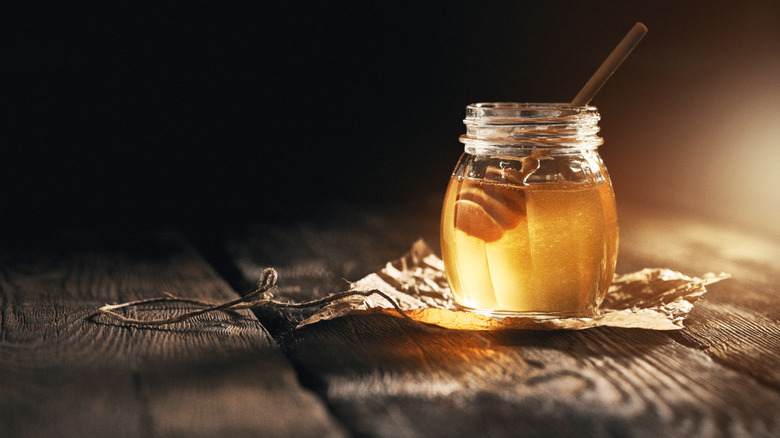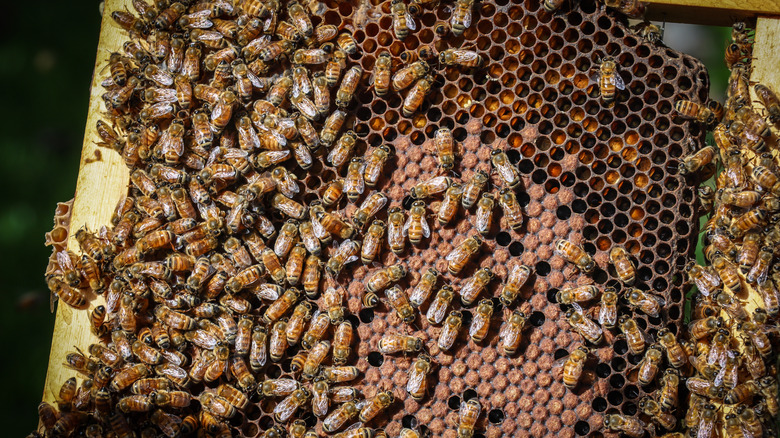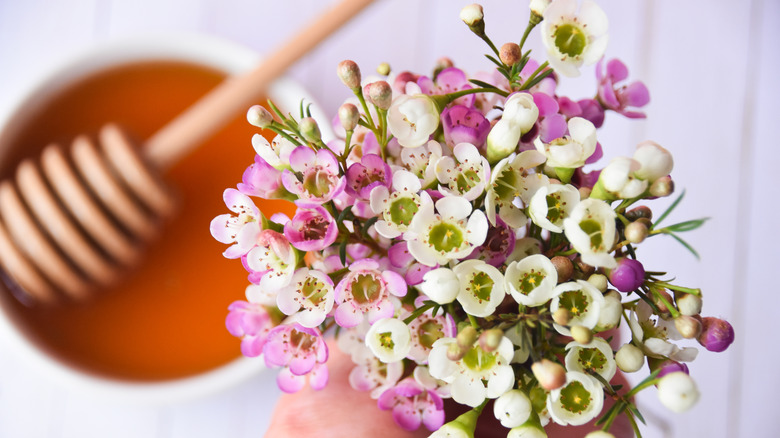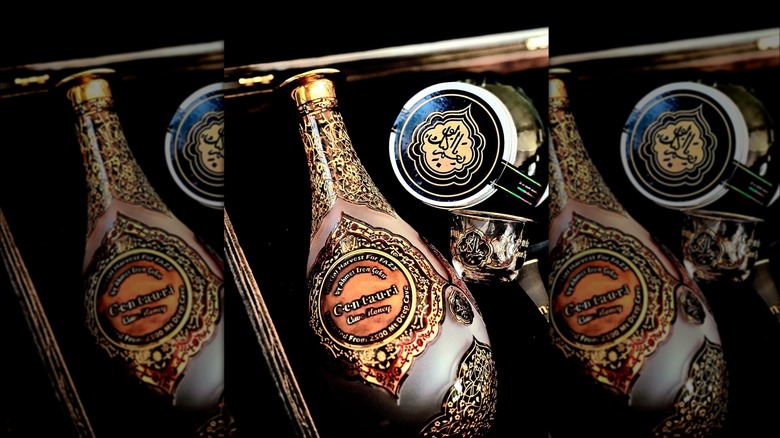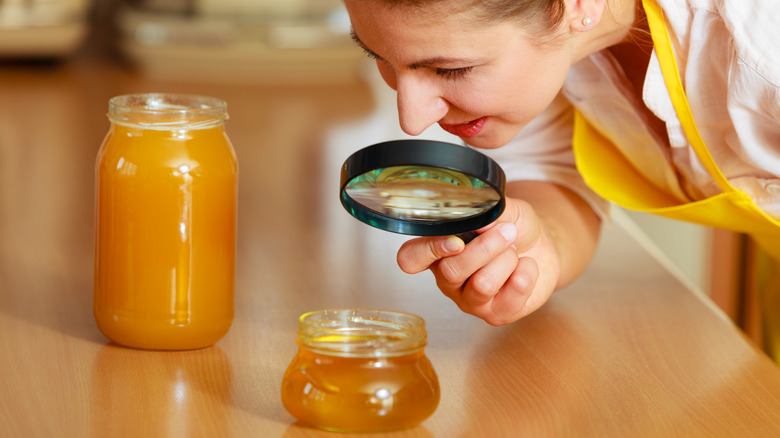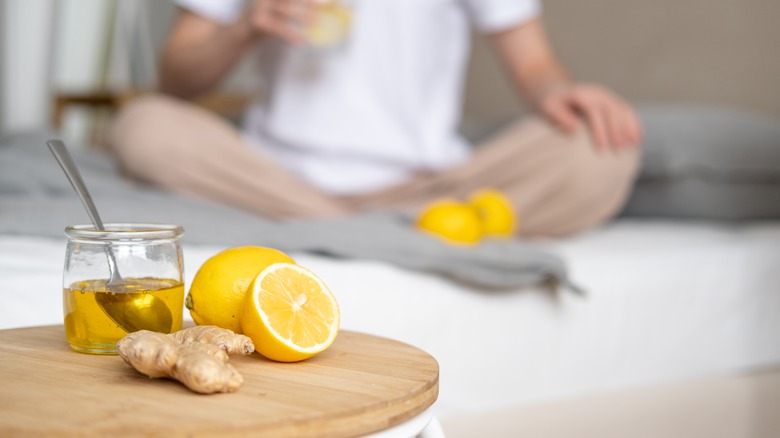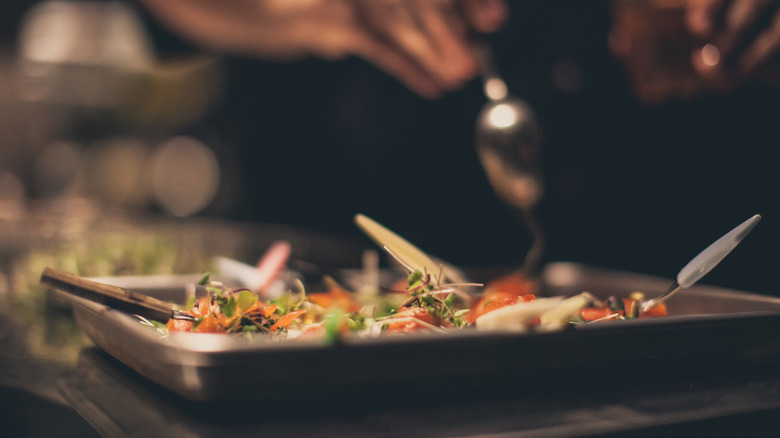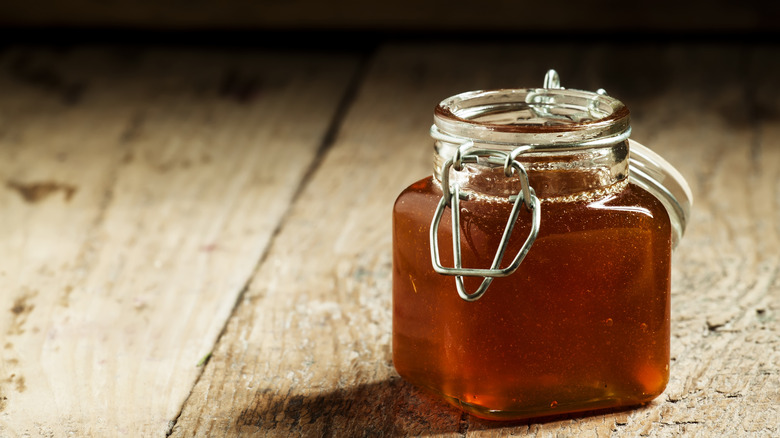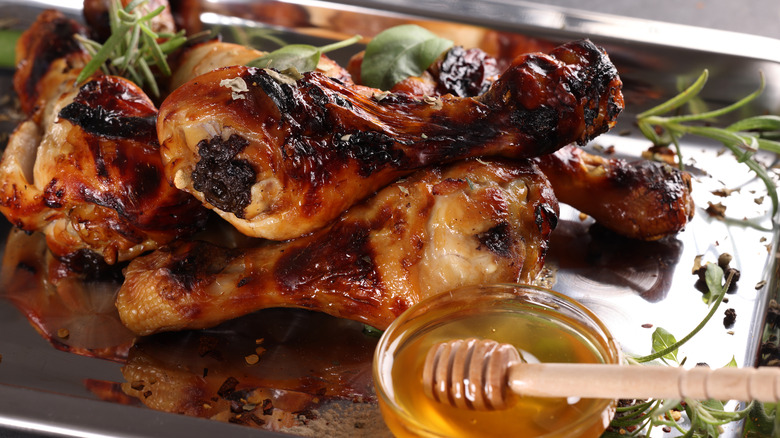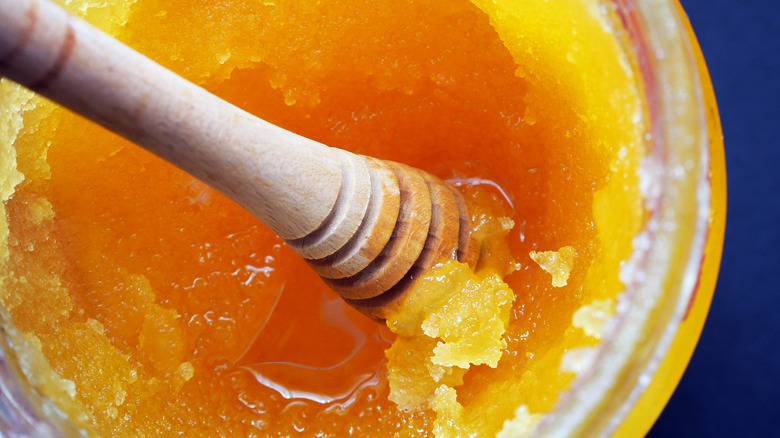All Of Your Honey Questions Answered
Honey is one of the oldest and most fascinating foods in the world. We have used honey for thousands of years as a food source, medicine, and preservative, with historical evidence pointing toward the Neolithic age (around 9000 to 3000 BC). That explains the number of cultural references and recipes we have today that include honey in some way or another. But how much do we really know about this sweet and indulgent substance?
Have you ever wondered what makes honey unique from other sweeteners? Are you curious to try some of the world's most exotic and rare honey varieties? Do you want to know why you should consume honey to improve your health? If you answered yes to any of the above, you're in the right place. From tips on choosing the right honey to where you should avoid using it, we've got you covered. Take some notes, and by the end of this, you'll be an expert on all things honey.
What is honey (and how is it made)?
Honey is a delectable syrupy substance that hardworking bees produce from the nectar of various flowers or insect secretions, such as honeydew from aphids (tiny insect that feeds on the sap of plants). Bees collect this nectar (or honeydew) and store it in a unique "honey stomach," where their digestive enzymes break it down into less complex sugars.
Once they return to the hive, bees regurgitate the nectar to other bees, who further process it by adding more enzymes. They share this liquid mouth-to-mouth until it reaches the "desired" consistency and can be deposited into hexagonal wax cells called honeycombs. Before sealing the cells with wax caps, bees fan honey with their wings to evaporate excess moisture.
Similar to skilled winemakers, bees leave the honey to mature and develop its unique characteristics, which usually takes up to three weeks. The final product is mostly a blend of fructose and glucose combined with water and trace amounts of minerals, vitamins, amino acids, flavonoids, and other aromatic compounds responsible for the individual qualities of the honey.
What are the different types of honey?
When shopping for honey, you may have noticed that not all honey looks alike. It varies in color and flavor, depending on the plant it was collected from. For example, clover honey boasts a delicate floral taste and a pale golden hue, while buckwheat honey has a robust, malty flavor and a dark brown color.
Some beekeepers rely on the blooming seasons of one particular flower, producing pure honey that reflects the characteristics of a single origin. Others keep their hives in diverse gardens, letting the bees collect nectar from whatever flowers are available, which produces a blended honey with a more complex and nuanced flavor.
The type of honey will also depend on its purity and processing method. Honey that is raw and unfiltered will have more impurities like propolis and pollen, potentially offering more nutrients. It will also contain some naturally occurring yeast and bacteria, which may shorten the shelf life of the honey. Regular honey, on the other hand, has all those impurities removed through pasteurization and (or) filtration, losing some of its original flavor and trace nutrients.
Where can you find some of the world's most unique honeys?
Honey is one of the world's distinguished natural sweeteners, but some honey really stands out. Take manuka honey, for example. Made from nectar foraged by bees from the manuka tree in Australia and New Zealand, this honey is a dark amber color and offers a rich herbal flavor infused with notes of caramel. What sets it apart is its high concentration of methylglyoxal (MGO). According to the Foods Journal, this compound is known for its potent antibacterial and anti-inflammatory properties, making manuka honey a wonderful option for healing wounds, infections, and sore throats.
If we venture to Yemen, we will find Sidr honey produced from the Sidr tree's flowers. This naturally reddish-brown honey, flavored with subtle notes of ginger and cinnamon, is only harvested two weeks each year, making it one of a kind treat. Sidr honey is cherished for its immunity-boosting and wound-healing properties (per Food Science and Nutrition).
Finally, Greece is known for its distinctively beautiful pine honey. This unique syrupy liquid is made by bees that collect sugary secretions from insects feeding on pine sap. As a result, the honey is dark with a distinct woody taste and hints of resin and smoke. Pine honey boasts a potent mixture of minerals and antioxidants recognized for its powerful anti-inflammatory, antiseptic, and antifungal properties (via Foods Journal).
What is the most expensive honey in the world, and why?
In 2021, Centauri Honey broke the Guinness World Record for the most expensive honey in the world, selling at over $11,000 per kilo. However, this price is only scratching the surface. Centauri Honey sells some of its honey well above the $11,000 mark — like Emerald honey, currently listed at a mind-blowing $1.1 million per kilogram – over 18 times more valuable than gold.
So, what makes this honey so shamelessly expensive? The answer lies in its exceptional quality, medicinal properties, and scarcity. According to Centauri Honey, the production is limited to a mere 2 to 50 kilograms (depending on the type) annually. Meanwhile, only one kilogram of the most precious 15-year-old Emerald honey has ever been made available.
The bees that produce Centauri honey live in caves 1,900 to 3,250 meters above sea level in the Saricayir Valley of Artvin City and feed on the nectar of flowers unique to the area, some of which now have been purposely planted to enhance honey's medicinal properties. The cave is a natural wonder providing the bees with a safe environment to thrive and produce honey all year round. Access to the cave is very limited, and only a handful of skilled speleologists are granted entry to safeguard the bees and collect the honey.
How can you tell if honey is natural?
Believe it or not, honey is one of the world's most faked foods, and as regulations lag behind, chances are you will come across a jar of honey that is not pure. Fake honey is a mixture of natural honey and other sweeteners, such as corn or sugar syrup. These sweeteners are cheap and relatively easy to mask through heavy processing and filtering.
So, how can you tell if the honey you're buying is genuine or fake? Begin with putting a drop of honey on your thumb to see if it stands firm; fake honey will usually appear thin and runny. Another way to test it is by placing a spoonful of honey in a glass of water and observing if it will settle at the bottom or form a lump. If it doesn't do that and it simply dissolves, chances are you have a jar of adulterated honey.
If neither of the above gives you a clear answer, you can also try a flame test. Dip a cotton swab in honey, then ignite it with a match. Genuine honey will ignite easily, while fake honey will sputter or refuse to burn. Lastly, just open a jar and dip your nose into it. It's the least foolproof method, but if you have a sensitive nose, you will pick up the distinctive floral scent that most fake honey will lack.
What are the health benefits of honey?
Honey has been highly valued for its healing properties since ancient times. The Egyptians, Greeks, and Chinese all used it to treat a variety of ailments, including wounds, infections, digestive issues, and skin conditions. While honey is a healthier alternative to sugar, nutritionally speaking, it's not that different. If anything, it has slightly more calories than sugar, which is why it is still recommended to use it sparingly, according to Healthline.
The real value of honey lies in its high antioxidant content, including flavonoids and phenolic acids. Antioxidants play a crucial role in shielding cells against the harmful effects of unstable molecules called free radicals, which are responsible for inflammation, aging, and chronic diseases, per Healthline.
There are plenty of reasons why you should consider adding honey to your diet. For one, it can help lower blood pressure, cholesterol, and triglyceride levels, while raising healthy cholesterol (per Healthline). Plus, it can soothe throat discomfort, suppress coughing, and enhance the immune system's ability to fight against harmful bacteria and viruses.
How to choose the best honey for your needs
When it comes to honey, there's more to it than just the sticky sweetness. Each honey has its unique flavor, aroma, and benefits depending on the source. So, if you're wondering how to choose the right honey for your needs, there's no need to get too complex. While you can experiment with different types of honey, a good starting point might be to consider its origin and color.
The color of honey varies dramatically, from pale gold to deep amber and muggy shades of chestnut. Lighter honey, say clover or orange blossom, brings delicate floral notes, an ideal complement to tea or a drizzle over pastries. Meanwhile, darker honey like buckwheat or manuka is richer and more intense, evoking molasses or caramel, perfect for hearty marinades or charcuterie boards.
However, if you want to use honey for its health benefits, look for darker and stronger-flavored honey with more antioxidants, minerals, and enzymes, according to Pharmacognosy Research. Some examples of dark honey are avocado, pine, and jarrah (a species of eucalyptus that grows in Western Australia). This type of honey is excellent for treating wounds, infections, and sore throats.
What are the ethical considerations when buying honey?
While we definitely need more bees to pollinate our food supply, honey becoming a mass-produced commodity puts a strain on the bees. Sadly, unethical honey production is still relevant today. Large-scale honey farms often exploit the bees for their products, such as honey, beeswax, or royal jelly, without leaving the bees their hard-earned share. This practice is detrimental to their well-being and survival since honey in the hives is often replaced with a sugar substitute that lacks essential nutrients.
Unethical honey production affects us as much as the bees, however. This includes using harmful substances like pesticides, antibiotics, and synthetic chemicals to treat bee hives and the fields where the bees tirelessly collect the nectar. Eventually, traces of those chemicals end up in the honey we buy.
To avoid these issues, try to buy natural honey from trusted local beekeepers, or look for certifications or labels that indicate the quality and origin of the honey. Labels like "organic," "fair trade," and "true source" define the authenticity of the honey, ensure that workers get their share, and that your honey is grown without pesticides or antibiotics. One label you should always watch out for, however, is "pure," as it may be used to mislead you into thinking that the honey is natural and unadulterated.
How to properly store honey
If you're unsure how to store your honey, the simple answer is to keep it in a cool, dry, and dark place. This will help preserve its aroma, flavor, and color. It will also protect it from moisture and heat, which can eventually cause fermentation. A good storage spot in your house would be your pantry, cupboard, or cellar.
You can keep your honey in the original container or transfer it to another airtight glass or food-grade plastic container. Avoid using metal containers, though, as they can react with the honey and affect its taste. Also, make sure the lid is securely fastened to prevent air and moisture from entering the jar. This way, your honey will remain in the best shape for a long time.
Refrigerating honey may seem counterintuitive, as it tends to solidify at temperatures below 50 degrees. However, if you live in an area with scorching temperatures above 95 degrees, refrigeration might be your best option, according to a study published in 2020 in the Journal of Food and Nutrition Research. Honey stored above 95 degrees for a few months or more starts to develop moisture, which may increase the chances of fermentation. The research also suggests that if you genuinely want to preserve the value of your honey, keeping it at 39 degrees (or in the fridge) is the most optimal.
Where should you never use honey, and why?
While it may seem very tempting to use honey in all of your cooking, it is pretty sensitive to heat. Honey contains fructose, which caramelizes faster than sucrose in sugar, so it will turn rubbery and burn quicker when exposed to high heat, ruining the texture and flavor of your dish. That's why using honey as a glaze for grilling or frying requires some practice. You should brush your glaze on after you've taken your food off the heat or just before the end of cooking — this way, you will enjoy its aromatic nuances without burning it to ashes.
It's unfortunate, but cooking, in general, destroys valuable enzymes and antioxidants present in the honey. Even at temperatures as low as 99 degrees, the nutritional value of honey begins to decline. This means that if you have a valuable jar of raw honey in your pantry, it may be best to save it for adding to your tea, yogurt, or honey mustard sauce. When cooking or baking with honey, choose a less expensive variety; the nutritional benefits are lost once it reaches high temperatures and begins to caramelize, making it not much different from sugar.
Does honey expire?
You may have heard people say, "Honey never goes bad." It is true that if honey is natural and stored correctly, it can remain edible for centuries — thanks to honey's natural antimicrobial properties like high sugar content, low moisture, and acidity. As an extreme example, the oldest jar of honey was discovered in a tomb in Georgia, near Tbilisi, during the archaeological excavation in 2003. The ceramic pots found contained several types of honey, including linden and flower honey, dating back to 3500 B.C. — over 5,000 years ago!
While all this sounds convincing, it does not mean that honey can never change or deteriorate. In fact, it will expire if contaminated, adulterated, or stored incorrectly, per Healthline. This means that honey can lose its preservative qualities if it comes into contact with water, heat, or foreign microorganisms. For example, if moisture gets to honey, it will eventually ferment, developing a sour smell and off-taste.
To test if your honey's gone bad, you will have to use your senses. Honey should have a pleasant floral aroma that varies depending on the source. If it smells sour, fermented, or like a strong medicine, you may want to discard it. The same goes with the flavor — if it tastes ruined, it probably is.
Why does honey crystallize, and how can you prevent that?
Sometimes, when you leave your honey for longer, you'll find it has lost its smooth and runny appearance, and become thick and grainy. This is called crystallization, which happens when the sugar molecules in honey form solid crystals. Don't worry; crystallization does not mean your honey is spoiled. It still retains its flavor, aroma, and nutritional value. But why does this happen?
Honey is mainly composed of two types of sugars: fructose and glucose. These sugars are dissolved in water, but there is more sugar than water can hold. This means that honey is a supersaturated solution, which is unstable and prone to crystallization. When the temperature of honey drops, the glucose molecules start to separate from the water and form crystals. These crystals grow larger over time and make the honey hard and cloudy.
How fast your honey will crystallize will depend on the type of honey and storage temperature. Honey with more glucose crystallizes faster, like clover honey, for example. Storing honey at room temperature or above 25°C slows down crystallization, which means that if you ever want to make your honey runny again, you can easily do so by heating it gently. The best way to do this is to place the jar of honey in a bowl of warm water (not boiling) and let it sit until the crystals dissolve.
